Field trip 1: Discovering the considerable energy of Marseille
Marseille is continually re-imagined by its immigrants, which have been settling in this Mediterranean port since the Greeks set up camp in 600 BC. Tourism exists, but it’s not full-on. You’ll feel as thought you’re discovering the mash-up of ancient, modern and gritty all by yourself. Bonus: the restaurant scene here is evolved and under-the-radar. You must try bouillabaisse, which was invented here, at least twice.
Marseille is 35 minutes by car from Aix-en-Provence, our pick for base camp when visiting Provence.
Le Panier District
Le Panier, Marseille’s oldest neighbourhood, is edgier than the Vieux Port, and just as picturesque. It’s at the top of our must-explore list. Set on a hill above the water, the twisted, climbing alleys in this inner-city community are bedecked in street art; cheerful strings of laundry hang between pastel terraced houses. Real people live here and run the tiny artisan shops, glaciers, and cafes. Kids skateboard down impossibly narrow alleys. Grandmothers water flower pots and keep an eye out.
When Marseille was Greek Massilia, Le Panier was the site of the Greek agora, a.k.a. marketplace. That’s how it got its name ‘the basket’. It’s the perfect place to stock up on Marseille’s famous olive oil soaps, and other Marseillaise buys like the cheerful yellow La Cagole beer trays.
A climb up through the alleys will take you to one of the city’s most eye-catching cultural and historical sites – Vieille Charité.
Insider tip: Skip the stroller. Unexpected flights of stairs make it stroller unfriendly. We used hiking-style baby and toddler carriers in Marseille.
Vieille Charité
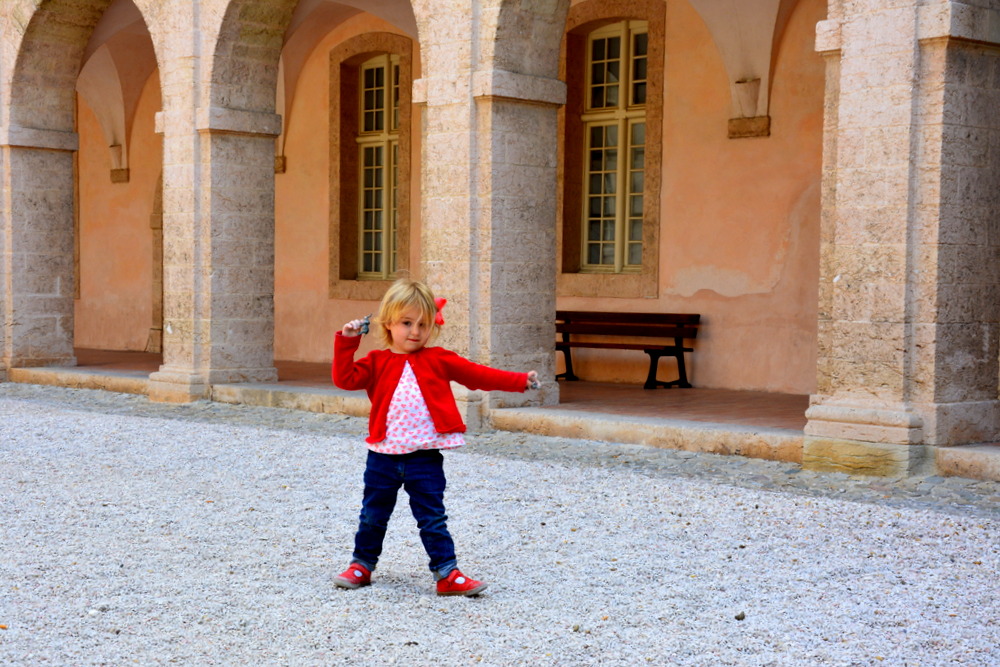
Image: Taraneh Jerven
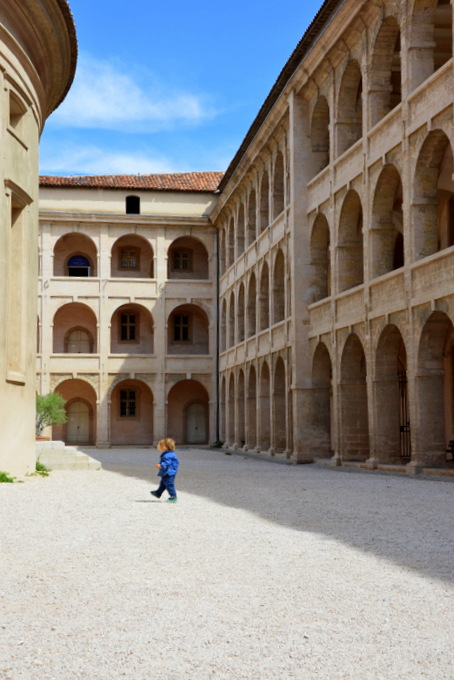
Image: Taraneh Jerven
The heart of Le Panier is Vieille Charité. Designed by Marseille-born artist/architect Pierre Paul Puget, and intended to “confine” the poor in the 17th century, the stunning pink stone complex has been reborn as a science and culture centre.
Four buildings, each with three open stories of vaulted galleries, enclose an internal courtyard with a cool, ovid-domed chapel. It’s an awe-inspiring spectacle; greats including Le Corbusier have fought to keep it standing.
Venture inside the buildings and you’ll find the Musée d’Archéologie Méditerranéenne, the Musée des Arts Africains, Océaniens, Amérindiens (M.A.A.O.A), the Centre International de la Poésie de Marseille (C.I.P.M), Le Miroir cinema and temporary exhibition halls.
It’s more than sufficient however to play in the middle of the wondrous monument. It’s a great place to let your small folk romp safely (keep that camera out) while you enjoy a coffee and pastry or light lunch at the courtyard cafe.
2 Rue de la Charité
Place de Lenche
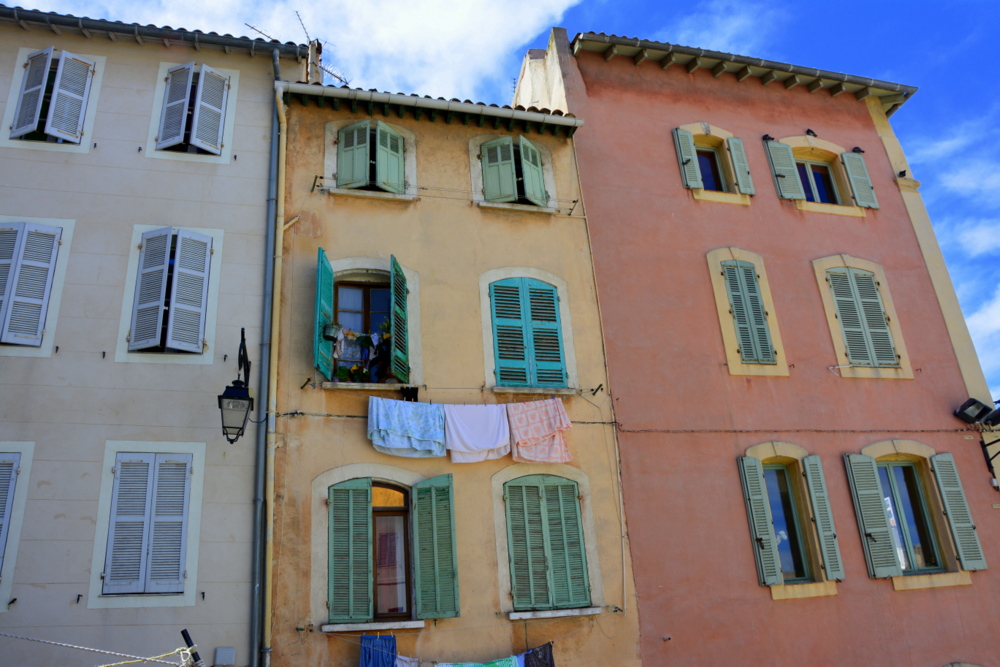
Image: Taraneh Jerven
Vanille Noire
In Marseille summer heat, there’s always room for an ice cream. A little ways down from Place de Lenche you’ll find Vanille Noire, an artisan ice cream maker who’s signature flavor is black vanilla. Captivating because it’s both salty and sweet, it’s worth trying a scoop of the house specialty.
Flavors rotate seasonally and can include banana flambé, pastis, pear William sorbet, honey butter, candied chestnut, pecan praline yogurt, quince, vine-ripened peach, rhubarb, ginger, and Valrhona chocolate.
13 Rue Caisserie, vanillenoire.com
Où est Marius?
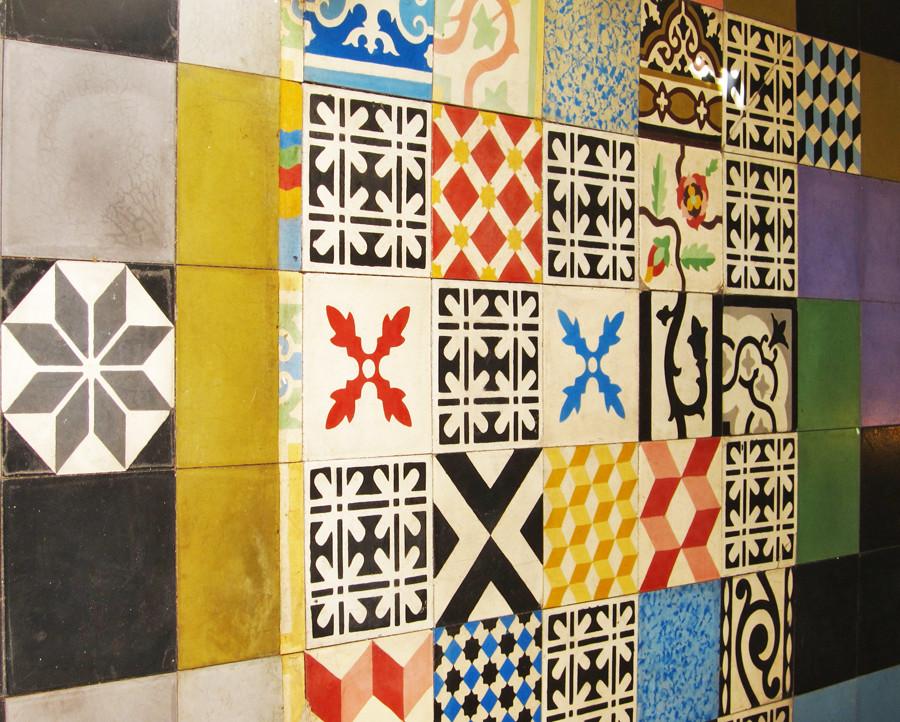
La Grande Savonnerie
Marseille has been known for olive oil soaps since the 17th century. Few of Marseille’s traditional soap makers remain, but this shop is the real deal. They’ve got genuine blocks of olive oil soap, made from local olive oil, without added color or perfume. You can even personalize them with a stamp, whether they are for personal hygiene or gifting.
36 Grand Rue, lagrandesavonnerie.fr
MuCem
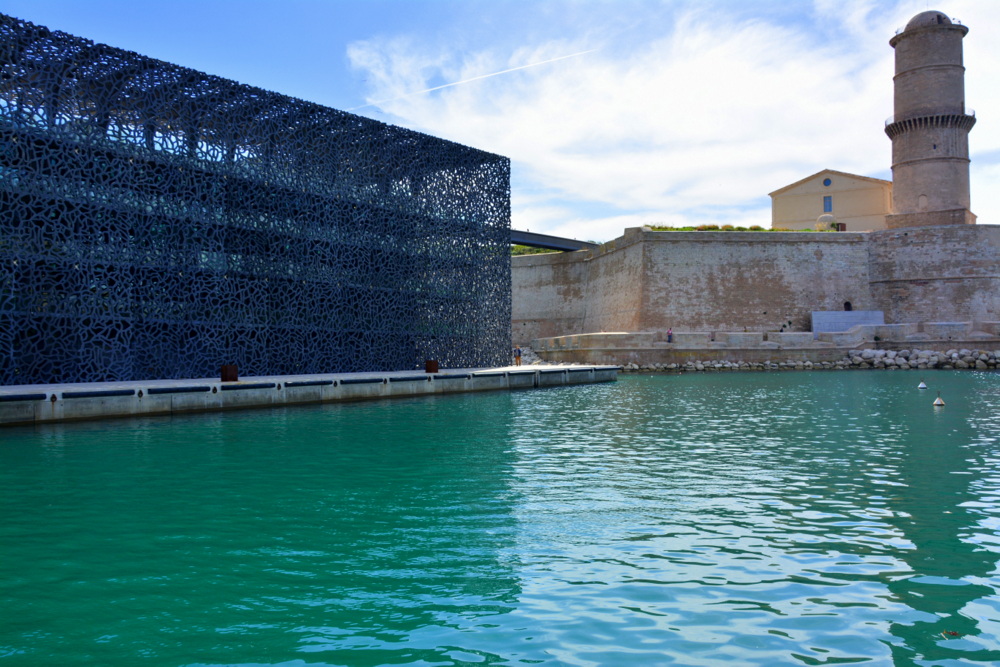
Image: Taraneh Jerven
If you go to one museum in Marseille, let it be MuCEM, the Museum of Civilizations of Europe and the Mediterranean completed in 2013. The architecture is 90 percent of the experience. Rudy Ricciotti (French of Algerian-Gypsy descent) used over 100 million Euros to design a modern glass box veiled a lacy concrete on Marseille’s J4 pier. The J4 pier is steeped in significance for Marseille; it’s the gateway of city’s multicultural identity. From here, immigrants came and went, artists and writers fled the Nazis, jazz entered the port city, and more.
The modern J4 complex is connected to historic Fort Saint-Jean by a breathtaking aerial footbridge flying across the water. Fort St. Jean is the site of both Greek and Roman chapels as well as city fortifications throughout the last few centuries. From here, another bridge connects to the rest of the city, making an urban promenade that connects the waterfront to town. Whether you’re on the ground looking up at the museum complex, or walking the footbridge, this is a must-do Marseille experience.
Inside: The museum is vast, the goal to display the civilizations of the Med is ambitious, and the collections of artifacts and imagery are disjointed at best. Children’s programming targets ages 7-12. Smaller folk will enjoy roaming the cool space.
7 Prom. Robert Laffont, mucem.org
Vieux Port
The heart of Marseille is the Old Port. Once home to the commercial docks, it’s now used by fisherman and pleasure boats. If you want to see the lively fish market, where you can bag all the ingredients for bouillabaisse, show up at 8am. You’ll find bars on the southern quay, and restaurants and cafes a block east on place Thiars and cours Honoré d’Estienne d’Orves
Chez Fonfon
You visit Marseille, you eat bouillabaisse. It’s the law. For any serious eater, consuming bouillabaisse in Marseille should be at the top of their culinary bucket list.
Bouillabaisse (pronounced boo-ee-yah-bess) began as a humble fisherman’s stew of leftovers. It’s evolved to a decadent dish with at least four types of fish added to a rich saffron seafood broth in a specific order based on cooking time. These include ascasse (rockfish or scorpion fish), araignée (spider crab), rouget grondin (red mullet), congre (conger eel) and chapon scorpène (red scorpion fish). The broth is enriched with onions, tomatoes, potatoes, fennel, parsley, bouquet garni, garlic, olive oil, and saffron. When it’s served with fantastic ritualistic detail, you’ll get a bowl of broth and toasted bread that you spread with garlic and a rouille, a rust colored mayonnaise flavoured with saffron, cayenne and garlic. The server will present the fish whole and fillet them at the table.
The recipe description does not do justice to the complex, spicy, delicate, rich flavors of the dish, or the visceral joy of dunking croutons with pungent, rich aioli into labor-intensive spiced fish broth. If you want to devour the sensation of the Mediterranean, this is it.
The obvious tourist destination for real bouillabaisse in Marseille is fancy-pants restaurant Le Epuisette. We’re not going to knock them, but if you want to rub shoulders with the Marseillais out to family lunch, head around the corner to Chez Fonfon.
Situated on The Vallon des Auffes, a lovely creek on the Marseille coast, this sophisticated family-run bistro has views of turquoise water, brightly painted fishermen’s cottages, and rows of fishing boats. Bouillabaisse is their specialty. They like small children. Take their advice on wine. Order oysters on the half shell while you await your main.
Insider tip: Bouillabaisse is a time intensive dish. You must reserve in advance and tell the restaurant you wish to order it.
Field trip 2: Cassis
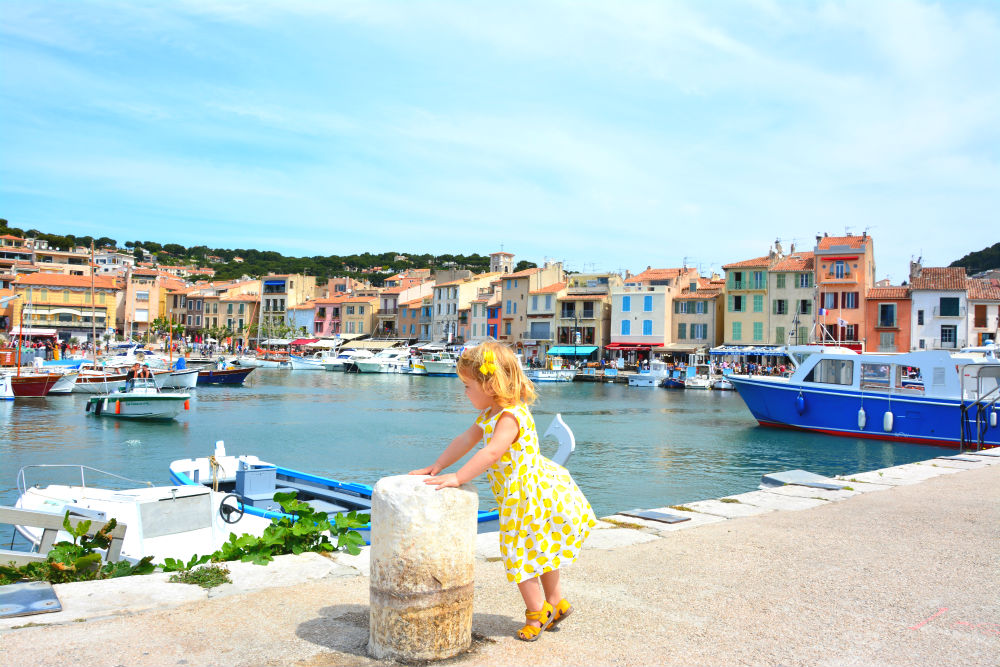
Image: Taraneh Jerven
Cassis lies a mere 12 miles east of Marseille. Visiting Marseille without a day trip to Cassis is out of the question. You must go. Where Marseille is gritty and real, Cassis is the sun-dappled, dreamy gem of a beach town you come to Europe in hopes of finding.
You enter the town by driving through vineyards which slant toward the sea, the vines heavy with the grapes that make the citrus-salt tinged regional Cassis white wine. Once you drive through town to the Vieux Port, the main beach Plage de la Grande Mer dazzles with a turquoise swimming area posing languorously next to the harbor with its double-ended boats known as pointus and polished pleasure boats. The almost-too-perfect marina is backed by the crooked peach, canary yellow and aquamarine buildings on the port.
Closer observation reveals a dramatic 14th-century château perched on the cliffs to the west above the main beach, old men tossing pétanques in the sun by the main public parking lot, and fisherman shucking sea urchins in front of a crowd of amazed tourists.
We recommend visiting in late spring when you can still get parking in town (in summer all the public parking lots, even those miles out fill up by 10am), and the hiking paths into the stunning coastal region are open because the fire risk is still low.
There are three things you must to do in Cassis: hike the calanques, swim, and taste the local wine. It makes good sense to hike, swim and picnic before the wine sipping. A calanque? What’s that? Read on and we’ll tell you.
Calanques of Cassis
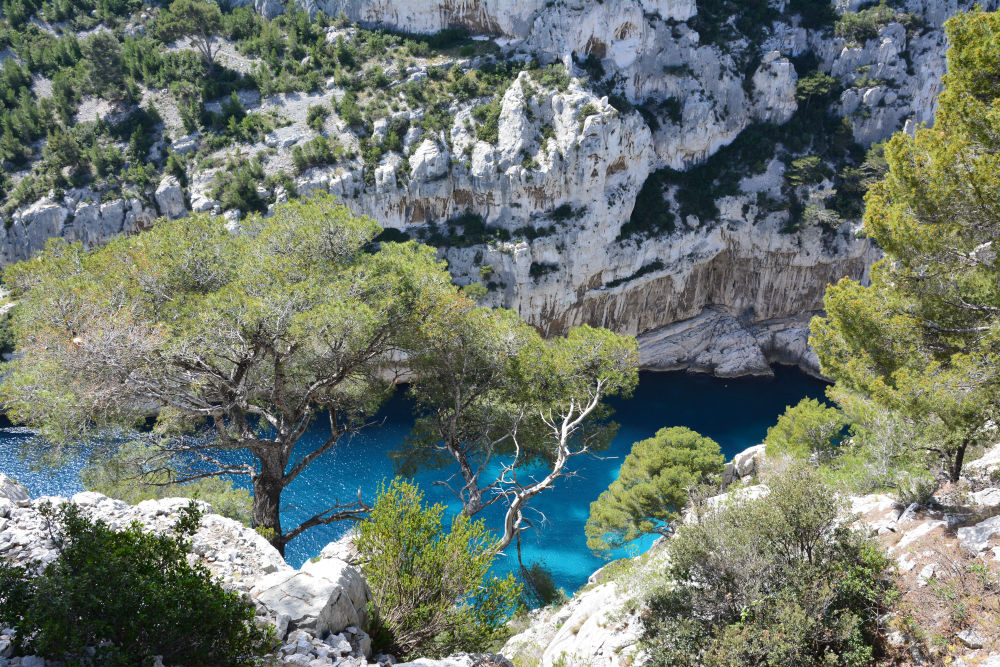
Image: Taraneh Jerven
We like to think of a calanque as a French fjord. Some members of this family are Norwegian, so that figures. It’s also described as a salt-water creek cutting in between two limestone cliffs. The coast around Cassis is stunning because of the calanques. A short hike out of town past fancy villas and onto orange-dusted paths reveals jagged threads of aqua water rimmed by silvery cliffs, and tiny swimming beaches surrounded by slouching Aleppo pine trees.
There are three calanques you can visit on foot from the centre Cassis — Port Miou, Port Pin and En Vau. Pick up a hiking map from the Tourist Office on the Vieux Port and follow the signs. You will need real hiking shoes, a proper hiking baby carrier with a frame, swim suits, water, and picnic supplies. Lots of families do it, but be prepared because the paths are steep and there are no facilities on the trails. You will not make it with a stroller. Part of the hiking path is now classified as a National Park, and access may be limited in summertime due to the risk of fires.
You can hike one, two or all three, depending on your stamina. We put the tots in hikers when the trail gets too steep. They come down again for easier paths, picnics, and swimming.
Port Miou
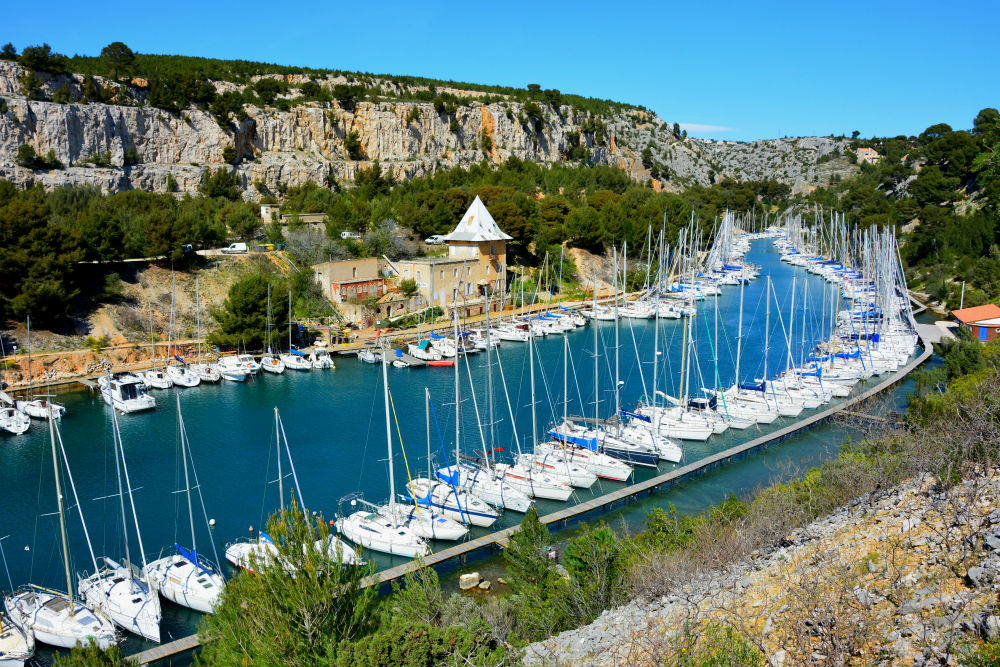
Image: Taraneh Jerven
Of the three ports, Port Miou is the first and easiest to reach. It’s a hugely popular with tourists with a camera fetish because it’s also a harbor with lovely yachts.
Port Pin
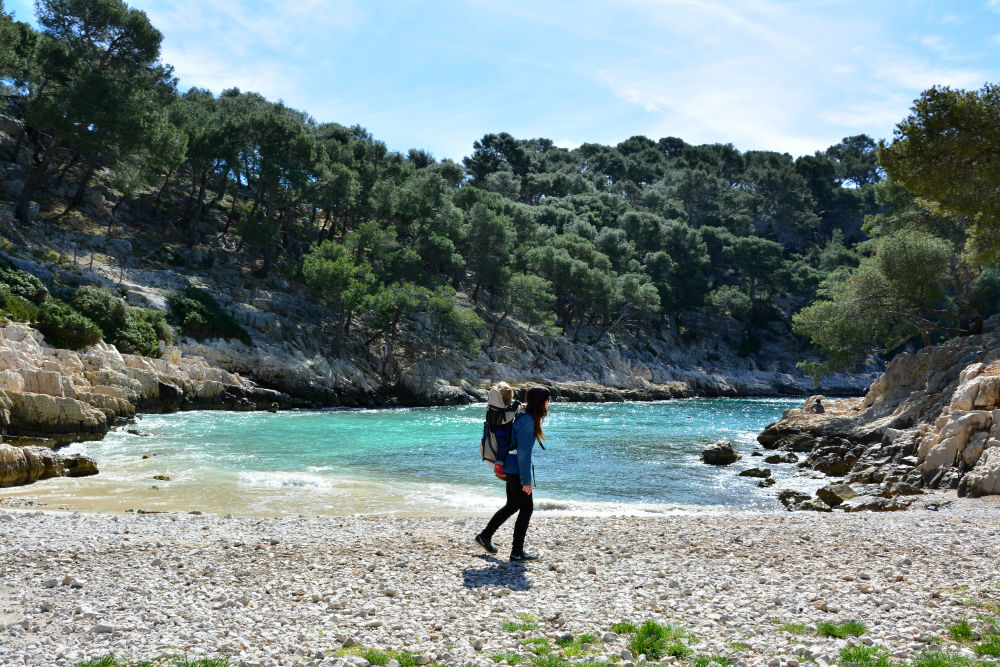
Port Pin. Image: Taraneh Jerven
Port Pin, the second calanque east of Cassis, has a gorgeous swimming beach and is slightly tricky to reach, but worth it. En Vau may prove a little too far for a day trip, especially if you plan on returning to town for ice creams, wine tasting, and bouillabaisse.
Plage de la Grande Mer
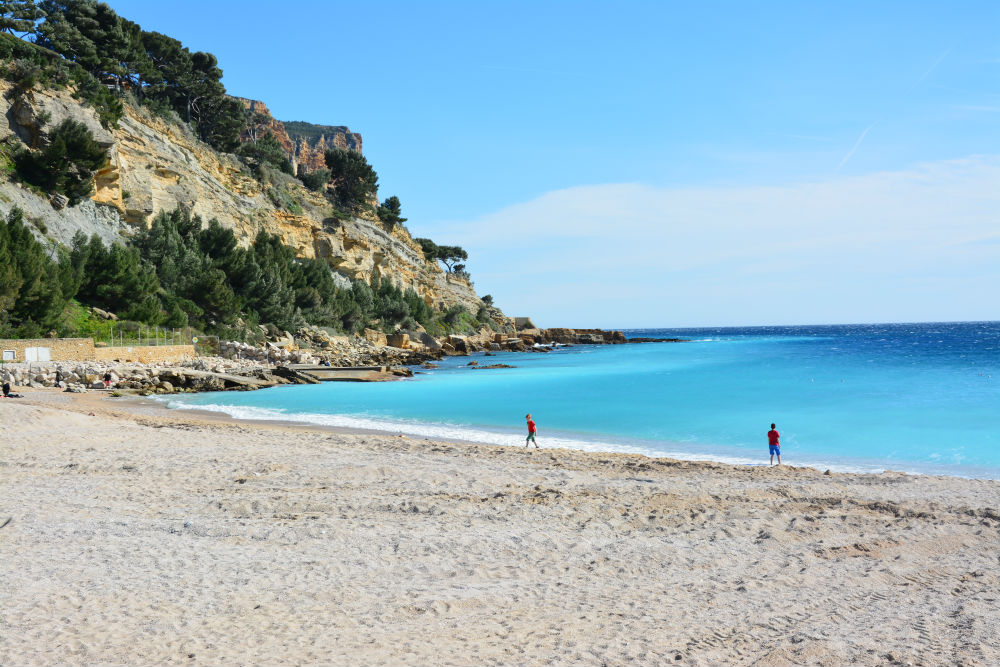
Image: Taraneh Jerven
Once back in town, you can grab an ice cream from one of the little shops such as Amorino on the main shopping artery Victor Hugo, before joining the other people watchers sitting on the stairs at the main beach in Cassis, Plage de la Grande Mer. Once your small folk have had enough sweets and sand play, take them wine tasting.
www.ot-cassis.com/en/the-beaches.html
AOC Cassine wine and wine bars in Cassis
You really want to taste the special wines of Cassis. They’ve been perfecting them since 600 BC. Cassis was one of the first regions in France to receive Appellation d’Origine Contrôlée (AOC), a legally defined and protected geographical indication which identifies where the grapes for a wine are grow, alongside big names like Châteauneuf du Pape and Sauternes. But unlike the other two AOCs in the 1936 classification, very little Cassis wine is exported, so you must drink it here! Two excellent vineyards to check out: Clos Sainte Magdeleine and Château de Fontblanche.
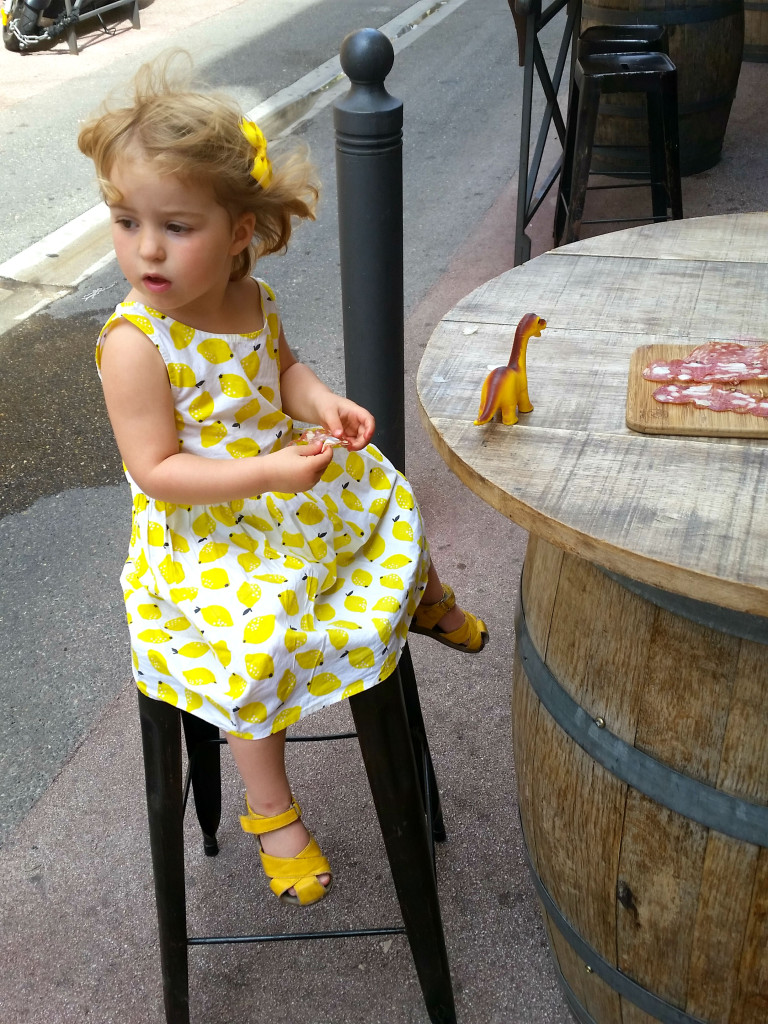
Small Folk on Divino patio. Image: Taraneh Jerven
There are two pleasant wine bars in Cassis where you can taste AOC Cassis wines by the glass. The first, Le Chai Cassidain, is in the tiny back streets, and has more mature scene. Divino is near the water and the proprietors have at least one young kid, who may come out and play while you perch on stools at a wine cask table, snacking on charcut and cheese. At either wine bar, you can purchase a bottle of the wine you liked to take home.
Cassis is known for its whites, although the appellation also produces reds and rosés. The whites are full-bodied with herbal, citrus, and salt tasting notes. Ugni Blanc is the principal white grape, followed by Marsanne, Clairette, Bourboulenc (Doucillon Blanc), Pascal, Sauvignon Blanc, and Terret Blanc. You’ll want to see if you can compare years from the same vineyards targeting Clos Sainte Magdeleine and Château de Fontblanche.
Divino, 3 rue Alexandre Rossat, no website
Le Chai Cassidain, 6 Rue Dr Séverin Icard, www.le-chai-cassidain.com
Jardin Public playground
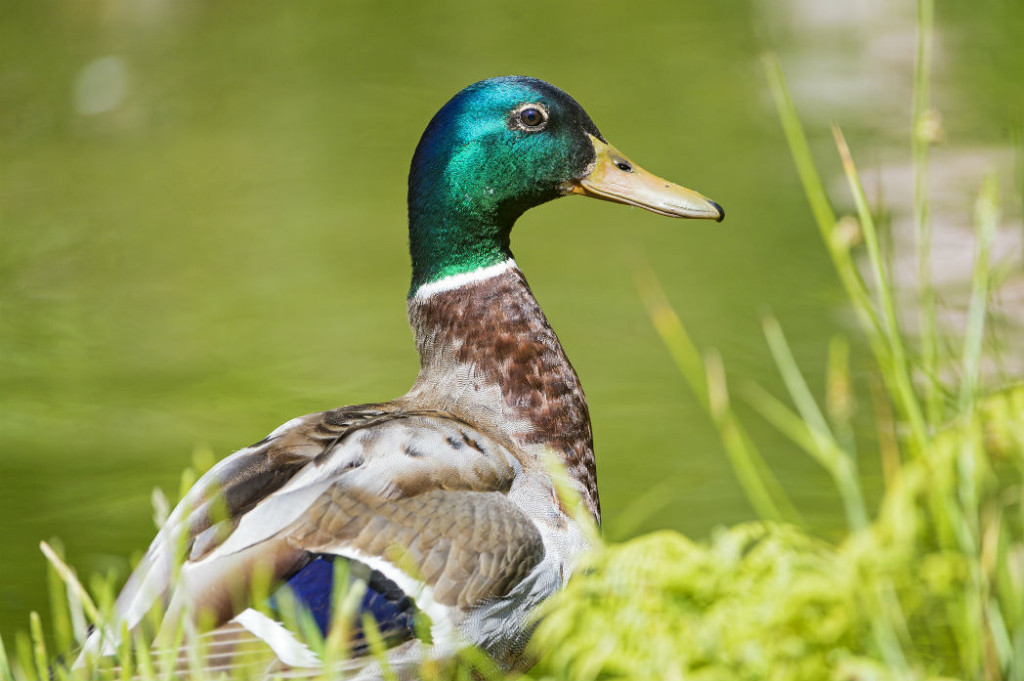
If your small folk need another romp before dinner, take them to the Jardin Public near the Cassis center on Place Baragnon. There’s a good playground and a duck habitat. You or your small folk will inevitably make friends with a local family . With only 8,000 residents, fulltime residents retain small town friendliness especially in off season.
Chez Gilbert
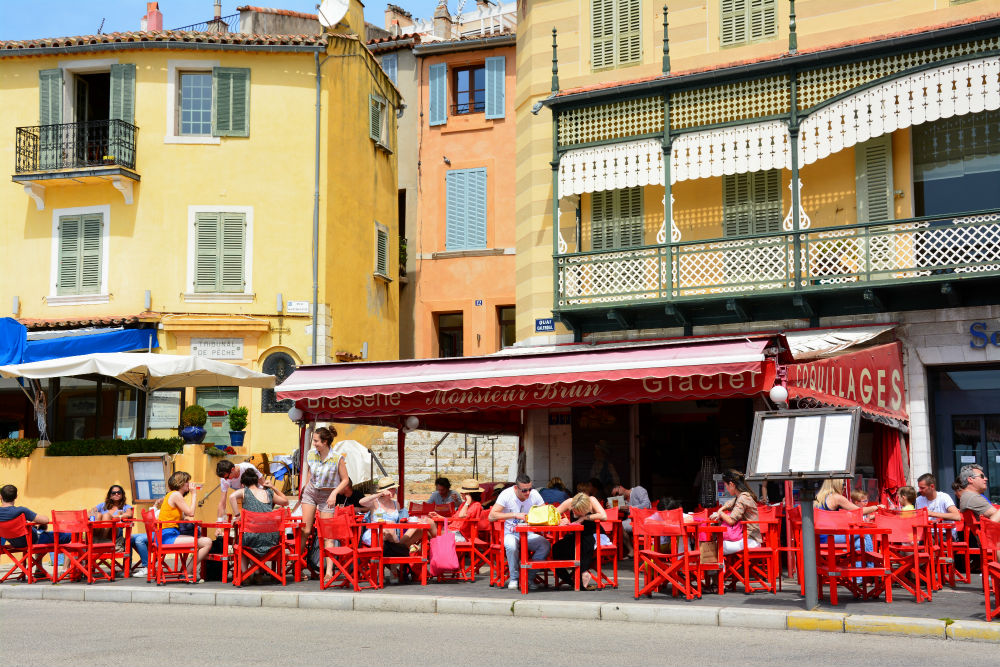
Restaurant scene at Vieux Port Cassis Image: Taraneh Jerven
We tend to picnic and snack our way through Cassis but it’s worth noting that if you desire a hearty meal, there is once officially-certified bouillabaisse restaurant here according to the Marseille charter. It’s on the port and it’s also family-friendly. If you’re craving good (but pricey) seafood, Chez Gilbert is the place to be in Cassis.
19 Quai des Baux, www.chezgilbert.net

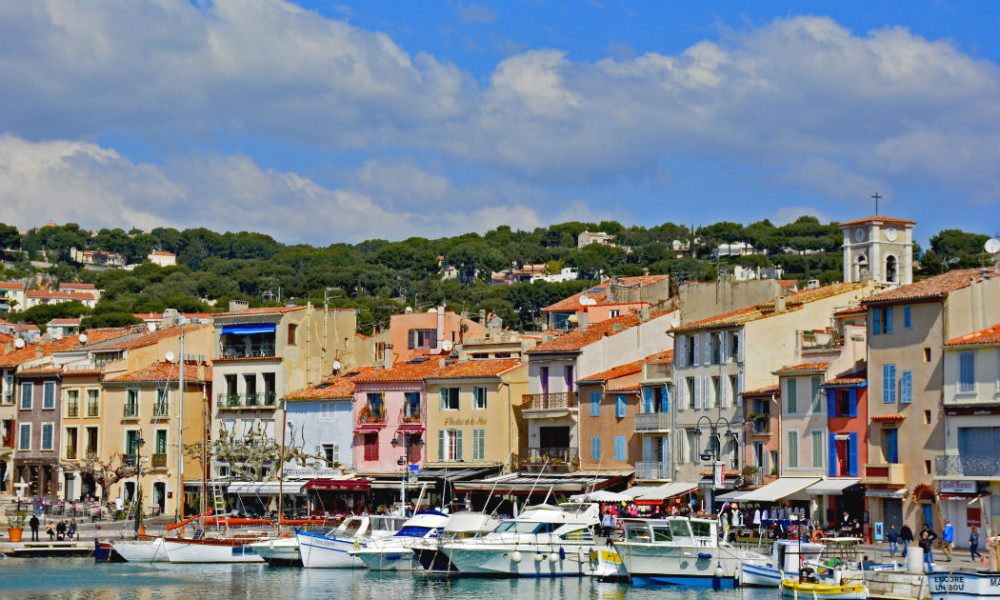

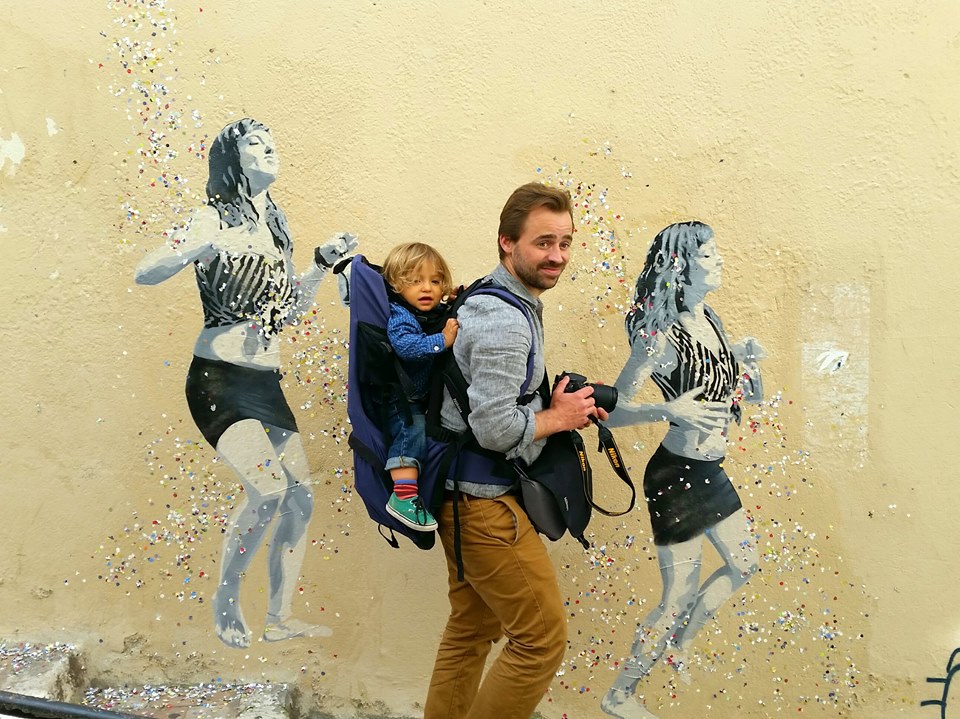
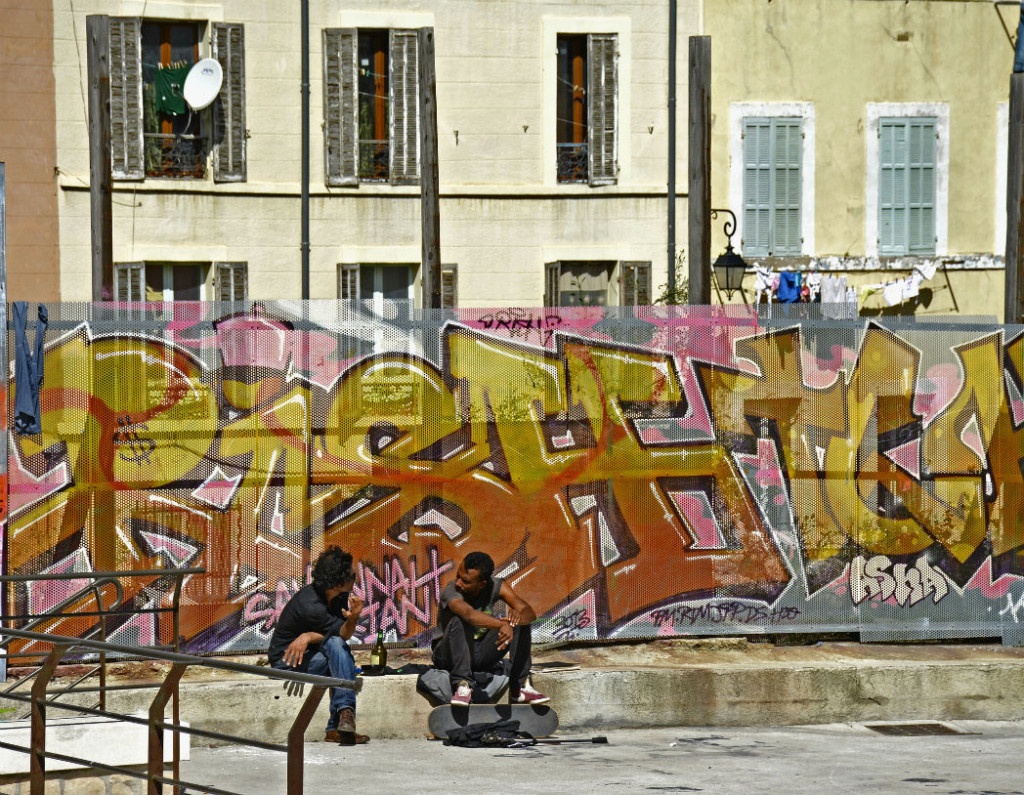
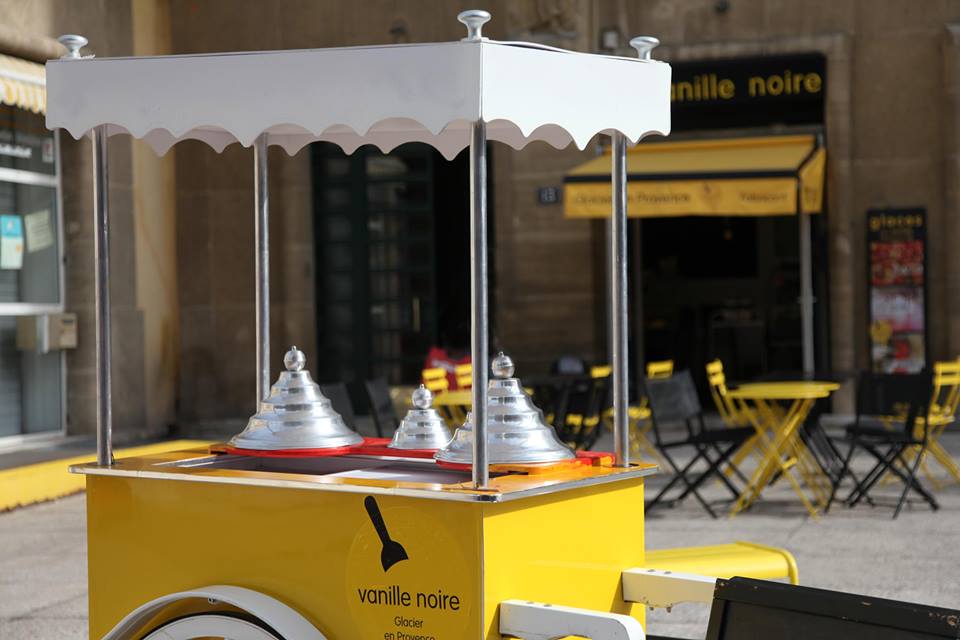
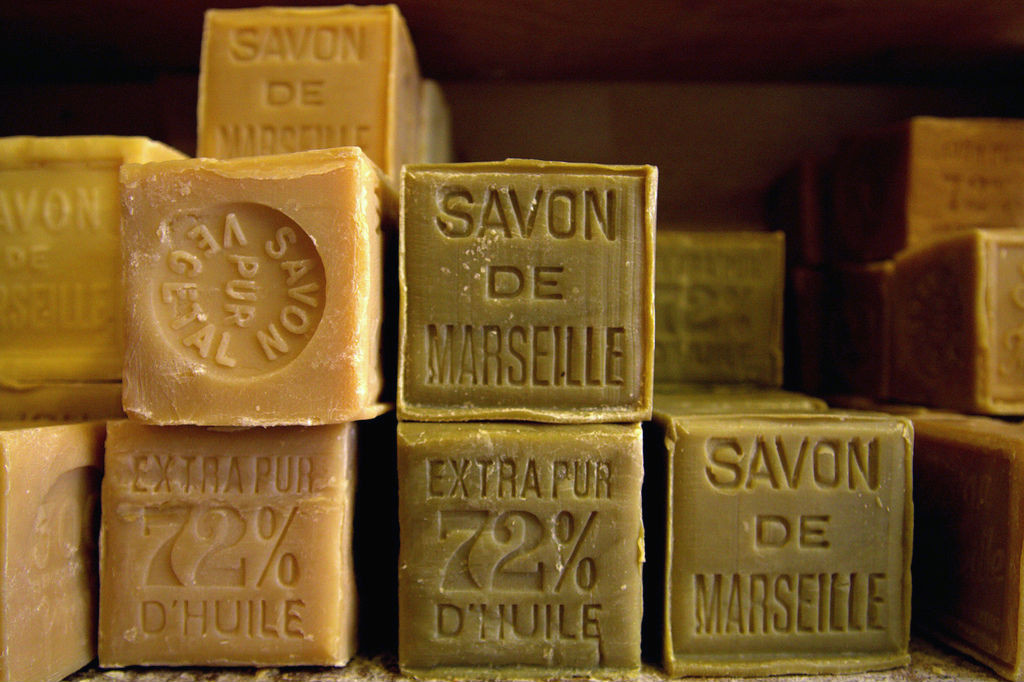
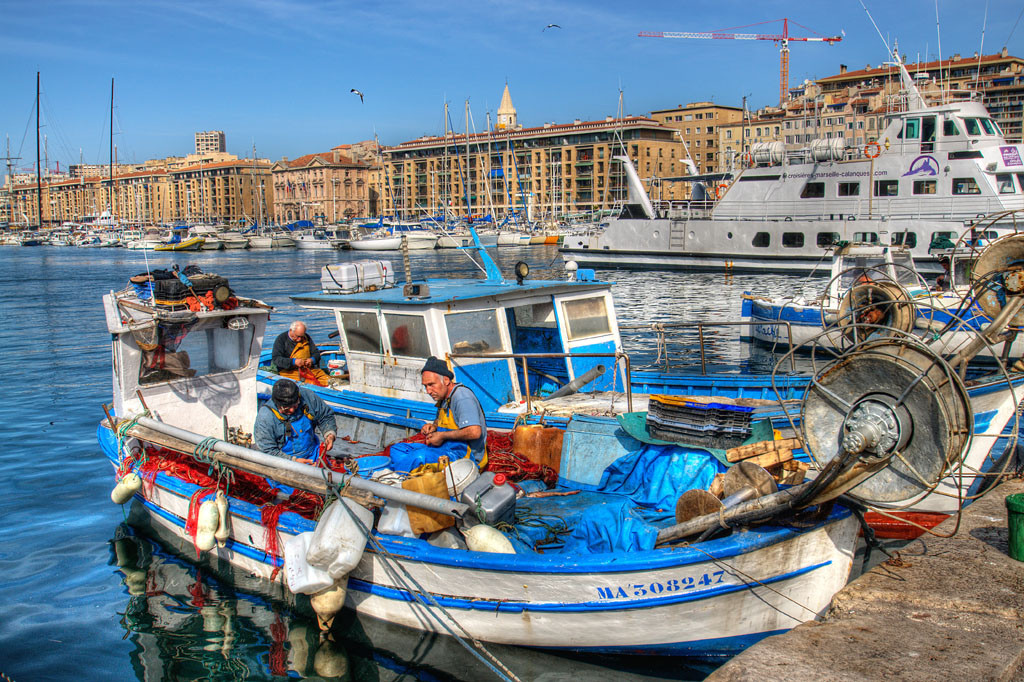
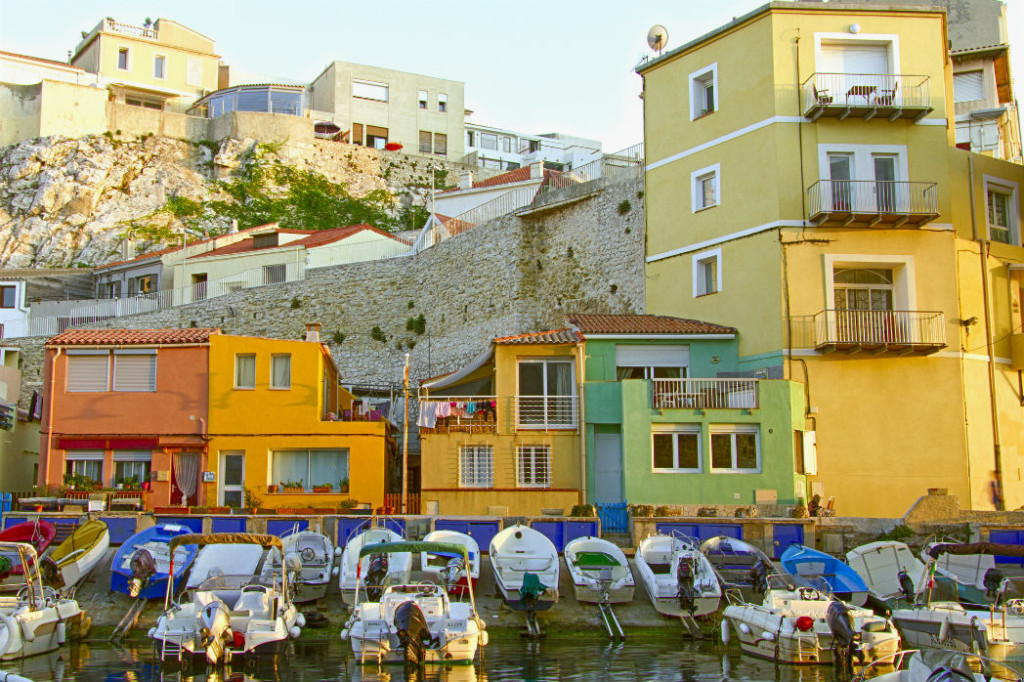
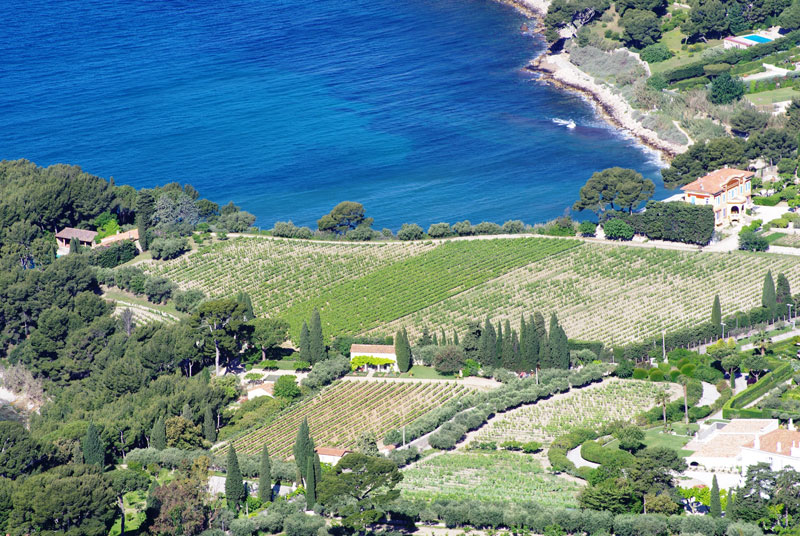
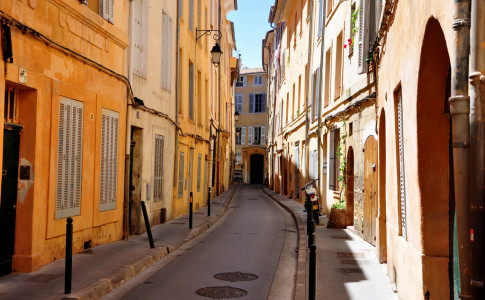



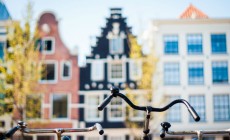

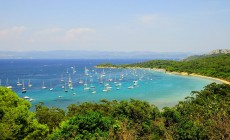
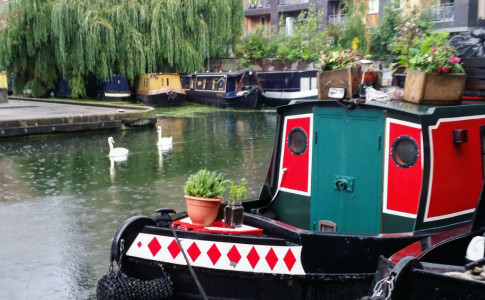
No comments